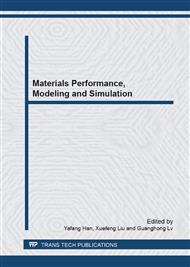p.303
p.308
p.316
p.322
p.328
p.337
p.343
p.349
p.356
Grain Evolution Character of Discal Parts by Roll Forming
Abstract:
A study on grain evolution character of discal parts roll forming was carried out by means of experiment and numerical simulation. The discal part material is aluminum alloy 6061 and titanium alloy TC4. The roll forming temperature is 480-500 and 930-1020 for aluminum alloy 6061 and titanium alloy TC4, respectively. A digital double-sided roll forming machine was used for roll forming experiment of discal parts. The high frequency induction heating was used for disk heating, where the deformation zone is in the state of constant temperature. A numerical simulation of roll forming of the 6061 aluminum alloy disk was carried out. The simulated results include macroscopic deformation and various grain size evolution variables. The dynamic recrystallization, the dynamic and static grain growth were considered in the numerical simulation. The experimental and simulated results showed that there may appear not only the grain refinement due to dynamic recrystallization but also dynamic and static grain growth. It is different that from discal parts integrally forging there are the largest deformation, the highest strain rate and the best recrystallization and grain refinement in the zones contacted with the roll tools. In the zones far from the rollers, the strain rate is very low and average grain size increases until once again contact to the rollers and start new grain refinement.
Info:
Periodical:
Pages:
328-336
Citation:
Online since:
March 2013
Authors:
Keywords:
Price:
Сopyright:
© 2013 Trans Tech Publications Ltd. All Rights Reserved
Share:
Citation:


